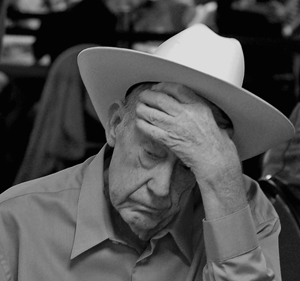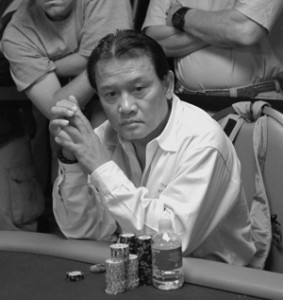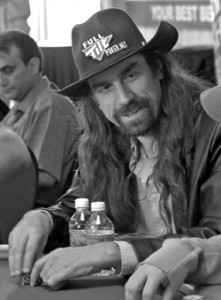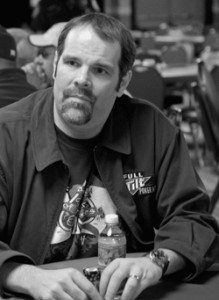Every time I say it’s a game, you tell me it’s a business.
Every time I say it’s a business, you tell me it’s a game
– Nick Nolte’s character in North Dallas Forty
 The news that the WSOP is parting with its traditional final table ways has been out for a couple of weeks now. I had just seen the title of the announcement in my email when the phone rang. I knew it was BJ Nemeth before the second ring. BJ and I had a number of conversations about it since the rumor broke more than six months ago. Players seem to either hate it or are backing it in reaction to the harsher economic realities that have been undermining the business of poker. And while I get both sides of the reactive coin, I also recognize that my currency differs from most when it comes to poker. For me, playing a final table months after the event doesn’t represent a change – just another step in the evolution away from the game of poker I came to know and love.
The news that the WSOP is parting with its traditional final table ways has been out for a couple of weeks now. I had just seen the title of the announcement in my email when the phone rang. I knew it was BJ Nemeth before the second ring. BJ and I had a number of conversations about it since the rumor broke more than six months ago. Players seem to either hate it or are backing it in reaction to the harsher economic realities that have been undermining the business of poker. And while I get both sides of the reactive coin, I also recognize that my currency differs from most when it comes to poker. For me, playing a final table months after the event doesn’t represent a change – just another step in the evolution away from the game of poker I came to know and love.
 I liked poker before it was popular; before it was a business. And maybe, just maybe, I liked it because it wasn’t mainstream. It was my secret world. I remember going to the World Poker Open in 2002 and wandering between the tables – brushing past the players that, up until that point, I had only read about. I chatted with them in the hallways; usually over a fast cigarette at the breaks. It was there that I would play my first “major” event – busting out half-way through when my flopped top pair/top kicker got outrun by a turned set. It was also there that I performed my first official sweating duties. I had met Judy Ingram at breakfast before the Ladies event. As she progressed throughout the day, she invited me to sweat her and provide chip count and player updates until she eventually made the final table; she finished in third place. Other than players’ spouses, there were no spectators. And other than Nolan Dalla – there was no media.
I liked poker before it was popular; before it was a business. And maybe, just maybe, I liked it because it wasn’t mainstream. It was my secret world. I remember going to the World Poker Open in 2002 and wandering between the tables – brushing past the players that, up until that point, I had only read about. I chatted with them in the hallways; usually over a fast cigarette at the breaks. It was there that I would play my first “major” event – busting out half-way through when my flopped top pair/top kicker got outrun by a turned set. It was also there that I performed my first official sweating duties. I had met Judy Ingram at breakfast before the Ladies event. As she progressed throughout the day, she invited me to sweat her and provide chip count and player updates until she eventually made the final table; she finished in third place. Other than players’ spouses, there were no spectators. And other than Nolan Dalla – there was no media.
 In 2003, before Chris Moneymaker would alter poker’s mainstream potential, I chatted with Perry Friedman on the sparsely populated WSOP bleachers as we sweat Chris Ferguson to his Omaha hi/lo bracelet. A week later, he would win another in the mixed limit holdem/seven card stud event. It would be almost another month before ESPN would bring in their film crew to televise the main event.
In 2003, before Chris Moneymaker would alter poker’s mainstream potential, I chatted with Perry Friedman on the sparsely populated WSOP bleachers as we sweat Chris Ferguson to his Omaha hi/lo bracelet. A week later, he would win another in the mixed limit holdem/seven card stud event. It would be almost another month before ESPN would bring in their film crew to televise the main event.
I love the old ESPN WSOP footage; documentaries of a game, not the entertainment business that it has become. And other than High Stakes Poker, I haven’t enjoyed televised poker more than I enjoyed the subdued intensity of pre-boom ESPN.
I understand the economic benefit to players, Harrah’s, and ESPN to try to keep the post-boom era from slipping away. And I absolutely understand the economic realities of the agents, writers, magazines, news websites, and of course online poker sites, that grew in the wake of poker’s popularity. Trust me: I do realize that my ability to make a living writing about poker was a direct result of the mainstreaming and monetization of poker. Even so, my attachment to poker has always been emotional not economic. In a contest between “the game” and “the business” – game was the no-brainer.
 Many of poker’s economic beneficiaries are desperately fighting to hold on to the vestiges of the ebbing poker boom. They are hoping that four months of hype will be just the miracle cure needed to save an ailing patient. But whether the business of poker thrives or fades, the poker that I first loved won’t be resurrected either way. So at this point, I view the WSOP final table change with almost distant ambivalence. I understand the reasons for optimizing the promotion of poker and all the economic threads woven into that cloth. I know that finding an alternate media model may be paramount to ”saving” the business of poker. And I guess at this point, I will wish them the best of luck.
Many of poker’s economic beneficiaries are desperately fighting to hold on to the vestiges of the ebbing poker boom. They are hoping that four months of hype will be just the miracle cure needed to save an ailing patient. But whether the business of poker thrives or fades, the poker that I first loved won’t be resurrected either way. So at this point, I view the WSOP final table change with almost distant ambivalence. I understand the reasons for optimizing the promotion of poker and all the economic threads woven into that cloth. I know that finding an alternate media model may be paramount to ”saving” the business of poker. And I guess at this point, I will wish them the best of luck.
You hold on and I don’t know how. I wish I did. I can’t get negative enough. I can’t get angry enough. And I can’t get positive enough.
– Robert Redford’s character in The Way We Were